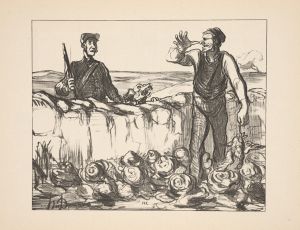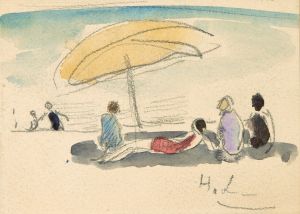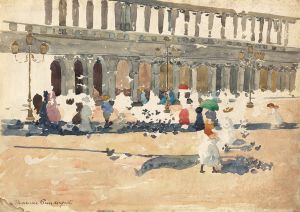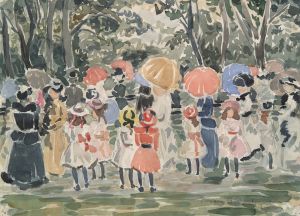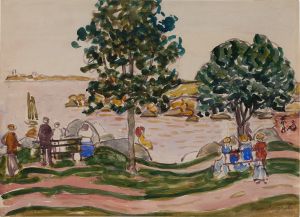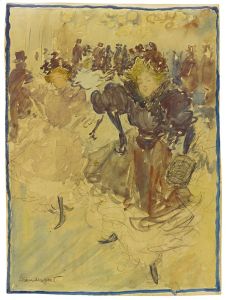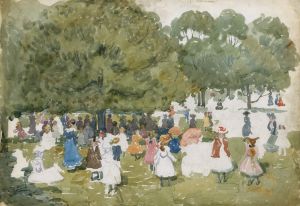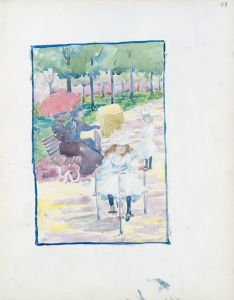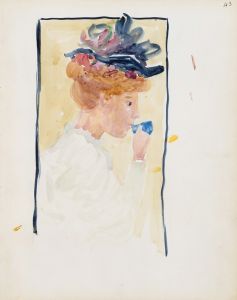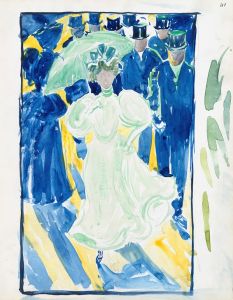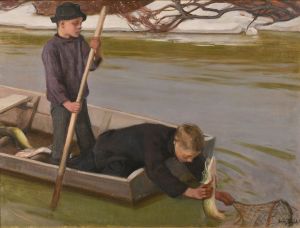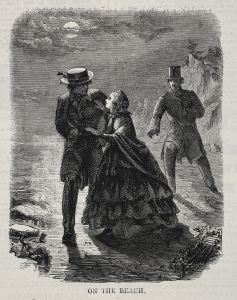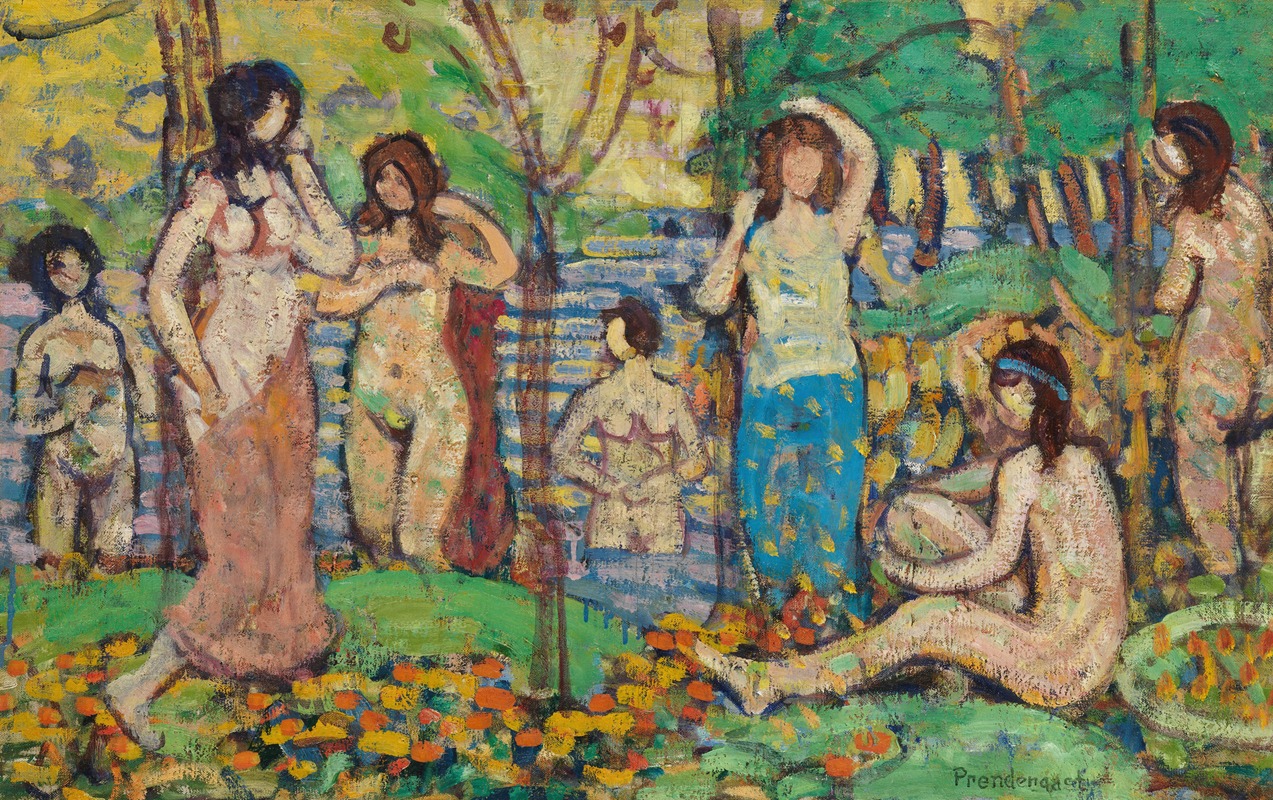
Beach No. 3
A hand-painted replica of Maurice Prendergast’s masterpiece Beach No. 3, meticulously crafted by professional artists to capture the true essence of the original. Each piece is created with museum-quality canvas and rare mineral pigments, carefully painted by experienced artists with delicate brushstrokes and rich, layered colors to perfectly recreate the texture of the original artwork. Unlike machine-printed reproductions, this hand-painted version brings the painting to life, infused with the artist’s emotions and skill in every stroke. Whether for personal collection or home decoration, it instantly elevates the artistic atmosphere of any space.
Maurice Prendergast was an American Post-Impressionist artist known for his vibrant and colorful depictions of leisurely scenes. One of his notable works is "Beach No. 3," which exemplifies his unique style and artistic vision. Prendergast was born in St. John's, Newfoundland, in 1858, and later moved to Boston, where he developed his artistic career. He was part of the group known as "The Eight," which included artists who were pivotal in the transition from 19th-century academic art to modernism in the United States.
"Beach No. 3" is a testament to Prendergast's fascination with the theme of leisure and recreation, a common subject in his body of work. The painting captures a lively beach scene, filled with figures enjoying a day by the sea. Prendergast's use of color is particularly noteworthy; he employs a rich palette that brings the scene to life, with vibrant blues, greens, and earth tones that convey the warmth and vitality of a sunny day at the beach.
Prendergast's style is characterized by his use of flattened forms and a mosaic-like arrangement of color, which was influenced by his exposure to European Post-Impressionism during his studies in Paris. He was particularly inspired by the works of Paul Cézanne and the Nabis group, which is evident in his approach to composition and color. In "Beach No. 3," Prendergast's technique of applying paint in small, discrete patches creates a sense of movement and energy, drawing the viewer into the bustling activity of the beachgoers.
The figures in "Beach No. 3" are depicted with a sense of anonymity, their faces often obscured or simplified, which was a deliberate choice by Prendergast to focus on the overall harmony and rhythm of the scene rather than individual identities. This approach allows the viewer to appreciate the collective experience of leisure and the interplay of colors and shapes within the composition.
Prendergast's work, including "Beach No. 3," is often associated with the American Impressionist movement, yet his distinctive style sets him apart from his contemporaries. His paintings are celebrated for their decorative quality and the joyful depiction of everyday life. "Beach No. 3" is a prime example of how Prendergast captured the essence of his subjects through a modernist lens, emphasizing color and form over realistic representation.
Throughout his career, Maurice Prendergast remained committed to exploring new artistic ideas and techniques, and his work continues to be appreciated for its innovative approach and contribution to American art. "Beach No. 3" is a reflection of his artistic journey and his ability to convey the beauty and vibrancy of the world around him through his unique vision.





